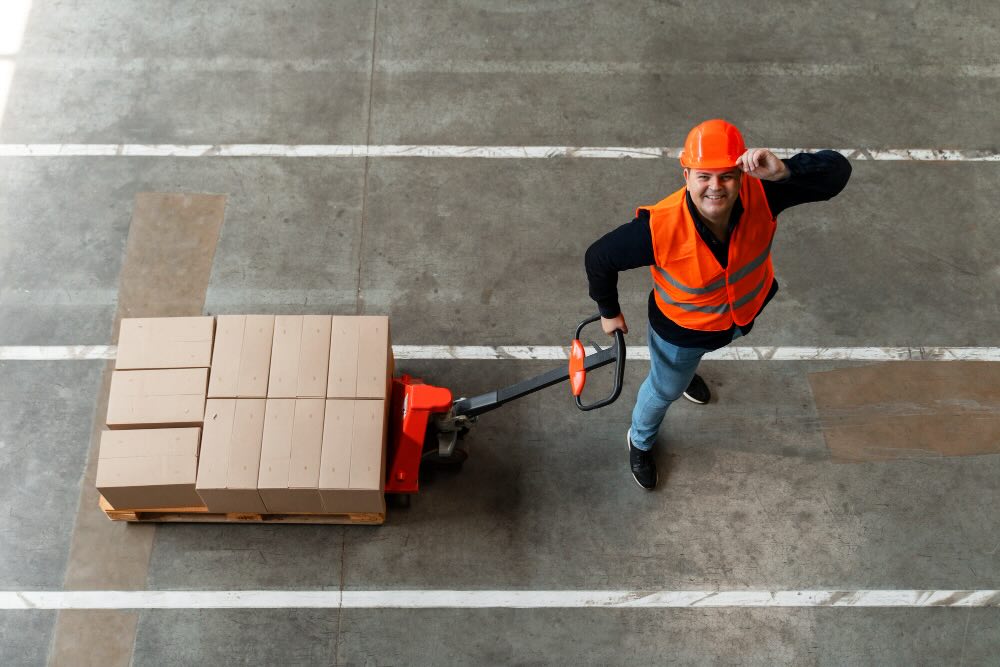
Exworks, primarily known as one of the delivery methods between the parties, especially the exporter and the seller company. Among the 11 different delivery methods listed in the updated Incoterms of 2020, Exworks is also known as delivery at the place of business. In this delivery method, which is the least risky, EXW, the seller is only responsible for preparing and delivering the products. By default, the seller is obliged to load the products onto a transportation vehicle specified by the customer at their own premises and provide all necessary documents. The buyer, on the other hand, must organize international transportation and bear all related costs. Exworks is a delivery method that includes certain advantages and disadvantages for both the seller and the buyer, and when applied correctly, can contribute to an efficient trade process.
What Is the Meaning of EXW?
EXW stands for Ex Works, a trade term that is an abbreviation of the English phrase. This term means that the seller delivers the goods at their own premises to the buyer. From the moment of delivery, the buyer assumes all transportation costs and risks.
What Is the EXW Delivery Method?
The EXW delivery method is a trade form used in international trade, included among the Incoterms rules, where the seller, i.e., the exporter, has minimal obligations. In this way, the seller's responsibility for delivering the goods to the buyer is only to prepare the goods at their own premises for loading onto the carrier specified by the buyer. In other words, all expenses and risks after the delivery of the goods to the buyer are borne by the buyer. This means that the buyer must be aware of and plan for additional costs and risks such as transportation and insurance.
EXW is an ideal option for small-scale exporters initially, as well as for companies that want to minimize the exporter’s responsibilities during export transactions. This delivery method implies that the seller only needs to act in accordance with the regulations of their own country, while the buyer is responsible for all procedures that may arise during the export and import of the goods. Therefore, choosing the EXW delivery method requires more coordination and logistical planning for the buyer.
How Is the Ex Works Price Calculated?
The Ex Works price is a trade term where the seller offers the goods at their factory or warehouse, and all subsequent costs such as transportation and insurance are borne entirely by the buyer. To calculate the Ex Works price, direct costs such as the product’s production cost, labor, and material costs are considered, along with indirect costs. These indirect costs may include general administrative expenses, depreciation, and even potential profit margins.
First, the total cost of producing the product is calculated. Then, the general expenses of the business and profit margin are added on top of this cost. In Ex Works pricing, transportation, insurance, and similar costs up to the delivery point are not included in the price; these expenses are directly the responsibility of the buyer. Therefore, when calculating the Ex Works price, only the costs until the product is delivered by the manufacturer to the buyer are taken into account. This approach offers the buyer greater flexibility and control over delivery and logistics processes.
Responsibilities of Buyer and Seller in Ex Works Delivery
Seller
The seller’s sole responsibility is the shipment made for the organization of the buyer. They properly package, palletize, and crate the goods, then load them into a truck or container. The seller sends the goods, which are appropriately palletized or crated according to the type of product, from their facilities to the buyer’s address.
The seller fulfills the necessary requirements for the shipment at the date and time organized by the buyer. They prepare the goods for shipment, which are packaged, palletized, and crated according to each type of product, making them ready for dispatch. This way, the buyer can receive the goods without issues.
Buyer
The buyer bears all costs from the loading of the goods at the seller’s warehouse or factory, including transportation, insurance, customs procedures, and other expenses until the destination point. Additionally, the buyer assumes all risks. The buyer is responsible for ensuring the safe transportation of the goods and their arrival at the destination intact.
During this transportation process between the seller and the buyer, the buyer must take necessary precautions to ensure the safe transfer of the goods and their complete arrival at the destination. Otherwise, in case of damage to the goods, all responsibility falls on the buyer. Therefore, the buyer should closely monitor the transportation process and take additional measures if necessary.
The buyer must actively participate in the process from the moment the goods are loaded at the seller’s warehouse or factory until they reach the destination point, taking all necessary precautions. Otherwise, any issues that may arise will be entirely the responsibility of the buyer.
Exworks Responsibility Distribution
| Activity | Seller’s Responsibility | Buyer’s Responsibility |
| Preparation and packaging of goods | Yes | No |
| Loading location | Seller’s facilities or designated place | – |
| Loading of goods | No | Yes |
| Preparation of transportation documents | No (but can assist upon request) | Yes |
| Completion of export customs procedures | No | Yes |
| Completion of import customs procedures | – | Yes |
| Transportation costs (main transport, intermediate transport, etc.) | No | Yes |
| Insurance | No | Yes |
| Destination of goods | – | Designated destination |
| Unloading costs and procedures | – | Yes |



